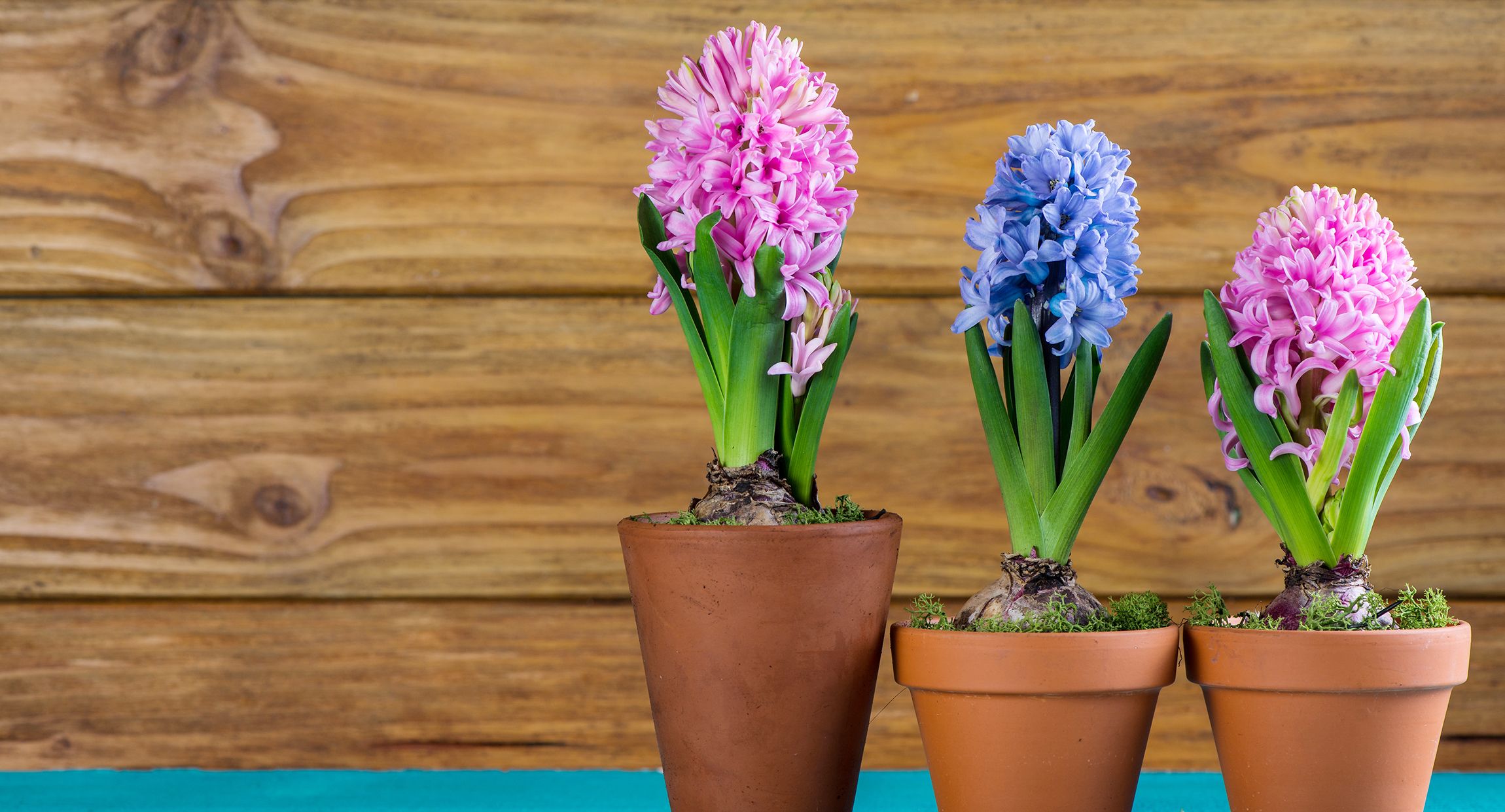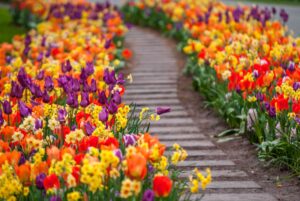Bulbs to Plant in Spring: A Complete Guide for Summer and Fall Blooms
Spring marks a season of rebirth in your garden, and while many gardeners focus on enjoying their spring-blooming bulbs like tulips and daffodils, savvy garden enthusiasts know that spring is actually the perfect time to plant summer and fall-blooming bulbs. These remarkable plants store energy in their underground structures, patiently waiting to transform your garden with bursts of color and captivating fragrances when the time is right.
Whether you’re an experienced gardener looking to diversify your seasonal display or a beginner eager to enjoy gorgeous blooms with minimal effort, spring-planted bulbs offer rewarding results. In this comprehensive guide, we’ll explore everything you need to know about selecting, planting, and caring for bulbs during the spring season to ensure stunning displays throughout summer and fall.
Why Plant Bulbs in Spring?
Before diving into specific varieties, it’s important to understand why spring is an ideal planting time for certain bulbs. Many gardeners mistakenly believe that all bulbs should be planted in fall, but this isn’t the case. Fall-planted bulbs (like tulips and hyacinths) require a cold period to bloom, while spring-planted bulbs typically originate from warmer climates and can’t survive harsh winter soil temperatures.
According to the USDA’s Plant Hardiness Zone Map, understanding your specific growing region helps determine the best timing for planting bulbs in your area. You can check your hardiness zone at the USDA Agricultural Research Service website.
Spring-planted bulbs generally offer these advantages:
- They provide spectacular summer and fall blooms when many other plants have finished flowering
- They’re often more heat-tolerant and drought-resistant than spring-blooming varieties
- Many are excellent choices for attracting pollinators like butterflies and hummingbirds
- Several varieties are perfect for cut flower arrangements
- Most return reliably year after year with minimal maintenance
Now, let’s explore five outstanding bulbs you should consider planting this spring.
5 Spectacular Bulbs to Plant in Spring
1. Dahlias: The Show-Stopping Garden Stars
Dahlias are among the most versatile and rewarding spring-planted bulbs (technically tubers) you can grow. These Mexican natives produce stunning blooms in nearly every color imaginable except true blue, with flower forms ranging from tiny pompoms to dinner-plate sized blooms that can reach 10-12 inches in diameter.
When you plant dahlias in spring, you’re setting the stage for a remarkable display that begins in midsummer and continues until the first frost. Their long blooming period makes them exceptional value for your garden investment.
Planting Tips: Wait until all danger of frost has passed and soil temperatures reach about 60°F before planting dahlia tubers. Choose a location with at least 6-8 hours of direct sunlight daily and well-draining soil. Plant the tubers about 4-6 inches deep with the “eye” (growth point) facing upward. Space larger varieties 2-3 feet apart and smaller varieties 1-2 feet apart.
Care Requirements: Dahlias appreciate consistent moisture but hate wet feet, so water deeply about once a week rather than providing frequent shallow watering. As they grow taller, especially the larger varieties, you’ll need to provide stakes or other support to prevent stems from breaking. Deadheading spent blooms encourages continued flowering throughout the season.
For overwintering, your approach depends on your climate. In zones 8-11, dahlias can typically remain in the ground, though they benefit from a layer of mulch. In colder regions (zones 3-7), you’ll need to dig up the tubers after the first frost blackens the foliage, clean them, and store them in slightly damp peat moss or vermiculite in a cool, dark place until next spring.
According to the National Garden Bureau, dahlias have seen a tremendous resurgence in popularity in recent years, becoming one of the most sought-after flowers for both garden displays and floral arrangements. Their incredible diversity makes them suitable for virtually any garden style.
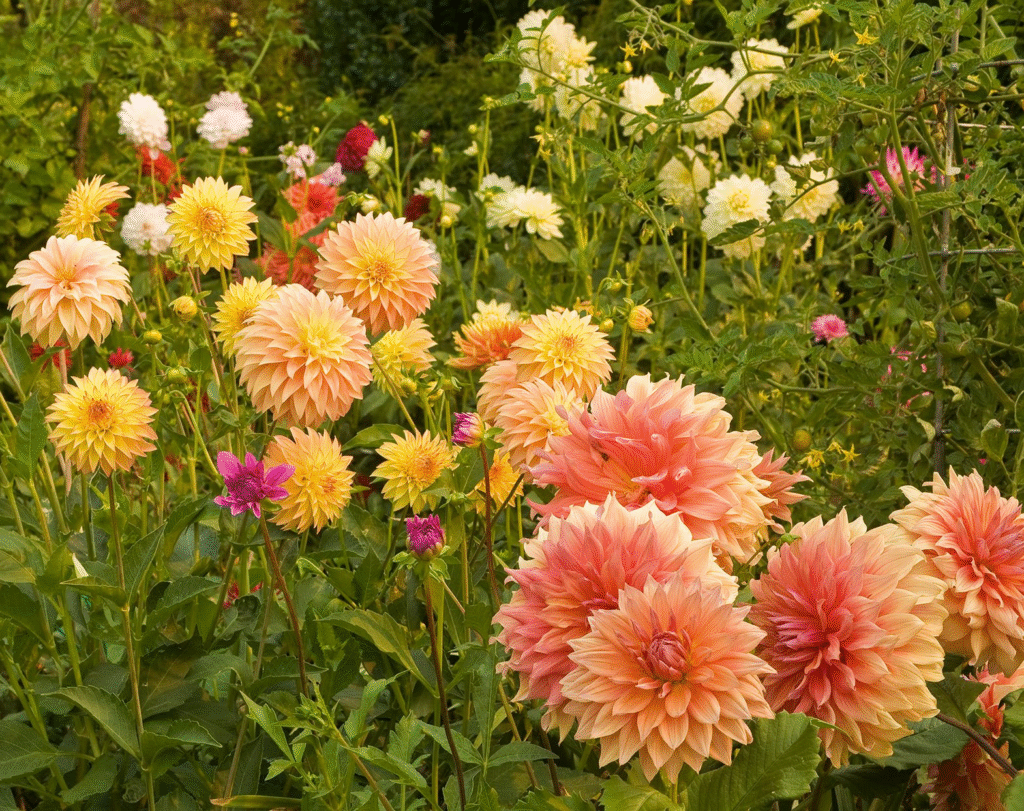
2. Gladiolus: Elegant Vertical Accents
When you’re looking to add dramatic vertical interest to your garden, gladiolus bulbs (technically corms) should be at the top of your planting list. These statuesque flowers produce tall spikes adorned with funnel-shaped blooms that open progressively from bottom to top, extending their display period.
Available in a rainbow of colors from soft pastels to vibrant primaries, gladioli bring a classic, elegant presence to any garden setting. Their sword-shaped foliage (the name “gladiolus” comes from the Latin word for “sword”) adds interesting texture even before the spectacular flower stalks emerge.
Planting Tips: Begin planting gladiolus corms in spring after the danger of frost has passed and soil temperatures reach about 55°F. For a continuous display, consider staggering your plantings every two weeks until early summer. Plant the corms 4-6 inches deep and 6-8 inches apart in full sun locations with well-draining soil. The pointed end should face upward.
Care Requirements: Gladioli need regular watering, especially during bud and flower development. Apply a balanced fertilizer when planting and again when flower spikes begin to form. Tall varieties will need staking to prevent toppling in wind or rain. After flowering, allow the foliage to die back naturally to help the corms store energy for next year.
In zones 7-10, gladiolus corms can typically remain in the ground year-round with good drainage and a protective layer of mulch for winter. In colder regions, dig up the corms after the first frost, cut the foliage to about 1 inch above the corm, dry them for 1-2 weeks in a warm, airy location, and store in mesh bags in a cool, dry place (around 35-45°F) until spring.
The USDA reports that gladioli remain one of America’s most popular cut flowers, with commercial production centered in Florida, California, and Michigan. Their excellent vase life makes them perfect for bringing the garden indoors.
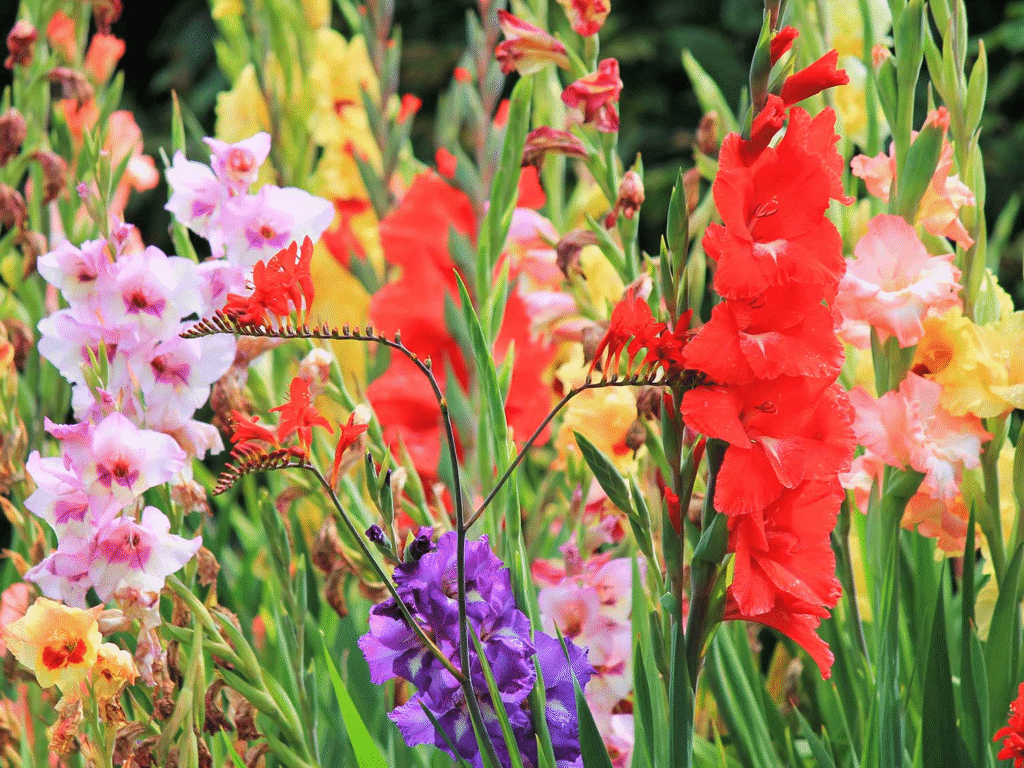
3. Canna Lilies: Tropical Flair for American Gardens
For bold, tropical drama in your summer garden, canna lilies offer unmatched presence with their large paddle-shaped leaves and vibrant flowers. These rhizomatous plants deliver on multiple fronts: architectural foliage (sometimes variegated or in striking burgundy tones), showy blooms, and impressive height that can reach 2-6 feet depending on the variety.
Native to tropical and subtropical Americas, cannas have adapted well throughout the United States and provide reliable summer color with minimal effort. Their ability to thrive in heat and humidity makes them especially valuable in challenging southern gardens.
Planting Tips: Wait until soil temperatures reach at least 60°F before planting canna rhizomes. Choose a location with full sun (at least 6 hours daily) and rich, moist soil. Plant the rhizomes horizontally, 4-6 inches deep and 1-2 feet apart, with any visible growth points facing upward. Water thoroughly after planting.
Care Requirements: Cannas are somewhat thirsty plants, preferring consistently moist soil but tolerating occasional drought once established. They respond well to regular feeding with a balanced fertilizer throughout the growing season. Deadheading promotes continued blooming, though many modern varieties are self-cleaning and require less maintenance.
In zones 8-11, cannas can remain in the ground year-round, though they may go dormant in cooler periods. In zones 7 and below, dig up rhizomes after the first frost, cut back foliage, and store them in slightly damp peat moss or vermiculite in a cool location (45-55°F) until spring planting time.
According to research from the University of Florida, cannas also provide valuable ecological benefits, particularly in rain gardens and bioswales where they help filter pollutants from water runoff while providing ornamental value.
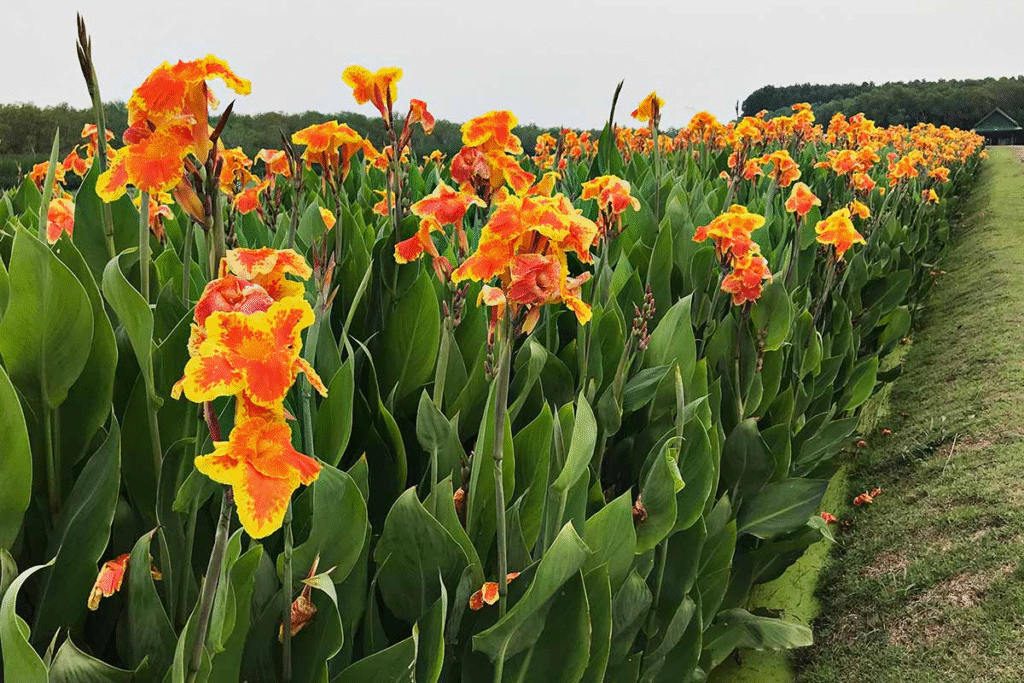
4. Oriental Lilies: Fragrant Garden Treasures
When you’re seeking a combination of exquisite beauty and intoxicating fragrance, oriental lilies should be your go-to spring-planted bulbs. These true lilies produce large, often bowl-shaped blooms with recurved petals in shades of white, pink, red, and bicolors, all emitting a sweet perfume that can fill an entire garden.
Oriental lilies typically bloom in mid to late summer, reaching heights of 3-6 feet depending on the variety. Their dramatic flowers can span 6-10 inches across, making them showstoppers in any garden setting. Unlike some other spring-planted bulbs, true lilies grow from bulbs with overlapping scales rather than solid structures.
Planting Tips: Plant oriental lily bulbs in spring once soil can be worked, ideally when temperatures reach about 50°F. Choose a location with full morning sun but partial afternoon shade in hotter climates. Plant the bulbs 4-6 inches deep and 8-12 inches apart in well-draining soil enriched with organic matter. Good drainage is essential to prevent bulb rot.
Care Requirements: Oriental lilies benefit from consistent moisture and appreciate a layer of mulch to keep their roots cool. Apply a balanced fertilizer when shoots emerge and again when buds form. Taller varieties may need staking to support the weight of their magnificent blooms. After flowering, allow the foliage to die back naturally to replenish the bulbs for next year’s display.
Most oriental lilies are hardy in zones 4-9 and can remain in the ground year-round with good drainage and a protective winter mulch in colder regions. If you live in very cold areas (zones 3 and below), consider planting in containers that can be moved to protected locations for winter.
The USDA Natural Resources Conservation Service notes that many lily species are valuable for wildlife, with their nectar attracting beneficial pollinators and their seeds providing food for birds. Some varieties, like the native American Turk’s Cap Lily, are particularly important for conservation efforts.
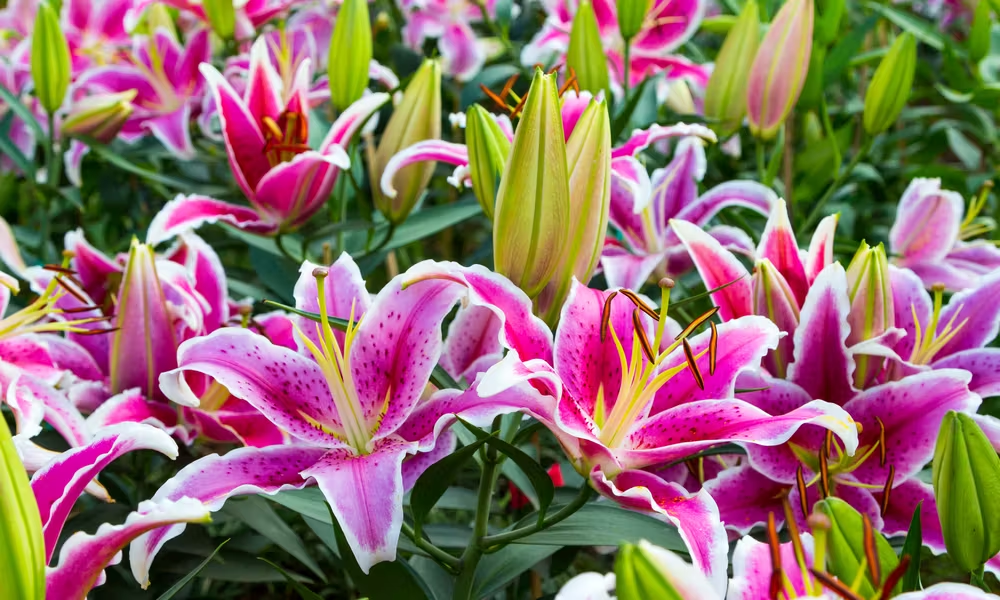
5. Begonia Tubers: Shade Garden Champions
Not all garden spaces are blessed with full sun, and that’s where tuberous begonias truly shine. These spectacular flowering plants thrive in partial to full shade, bringing vibrant color to areas where many other flowering plants struggle. Available in cascading, upright, and multiflora forms, tuberous begonias offer flowers in nearly every color except true blue.
What sets tuberous begonias apart is their incredible flower power combined with shade tolerance. Their blooms can reach 2-4 inches across in double forms that resemble roses, camellias, or carnations, depending on the variety. The flowers appear abundantly from summer through fall against attractive, often glossy foliage.
Planting Tips: Start begonia tubers indoors 6-8 weeks before your last frost date, or plant directly outdoors after all danger of frost has passed and soil temperatures reach about 60°F. Position the tubers with the concave side facing upward, barely covered with soil. Choose a location with rich, well-draining soil and protection from hot afternoon sun and strong winds.
Care Requirements: Tuberous begonias prefer consistent moisture but are susceptible to rot if overwatered. Water at the soil level rather than overhead to prevent disease issues on the foliage and flowers. Feed regularly with a balanced fertilizer formulated for flowering plants. Pinching the growing tips early in the season promotes bushier plants with more flowers.
In zones 9-11, begonia tubers may survive winter in the ground if soil drains exceptionally well. In most of the United States, however, they’ll need to be lifted after the first light frost. Allow the tubers to dry, remove any remaining foliage, and store in dry peat moss or vermiculite at temperatures between 40-50°F until spring.
The American Begonia Society reports that interest in tuberous begonias has grown significantly in recent years, with new varieties offering improved heat tolerance and disease resistance, making them even more versatile for American gardens.
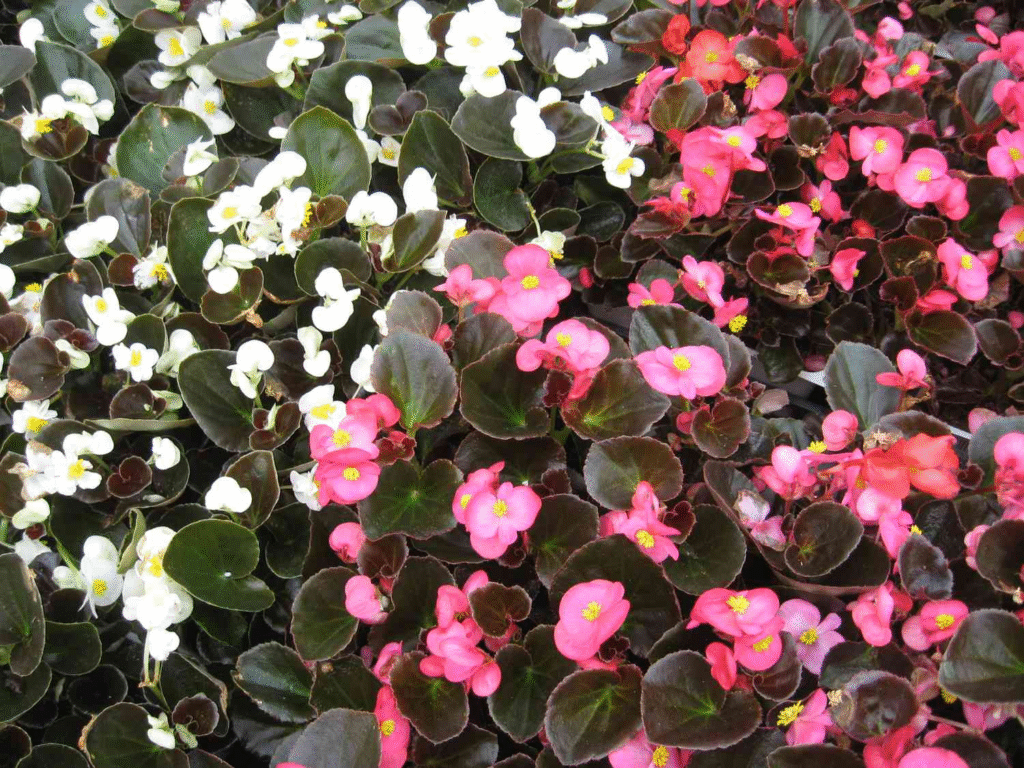
When and How to Plant Spring Bulbs
Successful bulb gardening begins with proper timing. While specific planting dates vary by region, the general rule is to plant summer-flowering bulbs after the danger of frost has passed and soil temperatures have warmed sufficiently. For most of the United States, this means mid-spring to early summer, typically April through June depending on your hardiness zone.
The following table provides a helpful reference for optimal planting times based on USDA zones:
| USDA Zone | Recommended Planting Time | Soil Temperature | Spring Bulb Examples |
|---|---|---|---|
| 3-4 | Late May to early June | 55-60°F | Dahlias, Gladiolus, Oriental Lilies |
| 5-6 | Mid-April to mid-May | 50-60°F | All five recommended bulbs |
| 7-8 | Late March to late April | 50-65°F | All five recommended bulbs |
| 9-10 | February to March | 55-70°F | All five recommended bulbs (consider pre-cooling some varieties) |
| 11 | January to February | 60-75°F | Cannas, Begonias (some other bulbs may need pre-cooling) |
According to the USDA National Institute of Food and Agriculture, proper soil preparation is equally important as timing. Most spring-planted bulbs prefer well-draining soil amended with organic matter. Working compost into your planting area improves both drainage and fertility, creating ideal conditions for healthy growth.
Site Selection and Soil Preparation
The success of your spring-planted bulbs depends largely on selecting the right location and preparing the soil properly. Here are some key considerations:
Sunlight Requirements: Most summer-flowering bulbs require at least 6 hours of direct sunlight daily, with begonias being the notable exception. Observe your garden throughout spring to identify areas that receive adequate sunlight as trees leaf out and shadows shift.
Soil Drainage: All bulbs, corms, tubers, and rhizomes are susceptible to rot in waterlogged conditions. To test your soil drainage, dig a hole 12 inches deep, fill it with water, and let it drain completely. Then refill it and measure how much water drains in an hour. Good drainage for most bulbs is at least 1 inch per hour.
Soil pH and Nutrients: Most spring-planted bulbs perform best in slightly acidic to neutral soil (pH 6.0-7.0). Consider having your soil tested through your local extension office before planting. Based on test results, amend the soil with lime to raise pH or sulfur to lower it as needed. Incorporate a balanced slow-release fertilizer or bone meal when preparing the planting area.
Planting Depth: A general rule of thumb is to plant bulbs at a depth equal to three times their diameter. However, specific requirements vary by species, so always check the recommendations for each type of bulb you’re planting. Planting too shallow may lead to frost damage and instability, while planting too deep can delay or prevent emergence.
Maintenance and Care Throughout the Season
Once your spring-planted bulbs are in the ground, proper maintenance ensures the best possible display. Here’s how to care for your bulbs throughout the growing season:
Watering: Most summer-flowering bulbs need consistent moisture during active growth and flowering periods. Water deeply when the top inch of soil feels dry, typically once a week in most climates, more frequently during hot, dry periods. Reduce watering as plants begin to die back naturally at the end of their growing season.
Fertilizing: Apply a balanced, slow-release fertilizer when planting and follow up with liquid fertilizer every 3-4 weeks during the growing season. Phosphorus (the middle number in fertilizer formulations) is particularly important for flower production, so choose a formula like 5-10-5 or 5-10-10 for best results.
Pest and Disease Management: Monitor your plants regularly for signs of trouble. Common pests include aphids, thrips, and slugs, while diseases may include various forms of rot, powdery mildew, and viral infections. The USDA recommends integrated pest management approaches that minimize chemical interventions. Many issues can be prevented through proper spacing, watering practices, and prompt removal of affected plant material.
Supporting and Deadheading: Taller varieties of dahlias, gladioli, and oriental lilies often need staking to prevent them from toppling in wind or rain. Install supports early in the season before plants reach full height. Regular deadheading (removing spent flowers) encourages continued blooming and prevents energy from being diverted to seed production.
Overwintering: Preparing for Next Year’s Display
As the growing season winds down, your attention should turn to preparing your bulbs for winter, especially if you live in colder climates. Here’s how to approach overwintering based on your USDA zone:
Zones 8-11: Many summer-flowering bulbs can remain in the ground year-round in these warmer regions. Apply a thick layer of mulch (3-4 inches) after the first light frost to protect them from occasional cold snaps. Ensure excellent drainage during winter months when growth is minimal.
Zones 3-7: In these colder regions, most spring-planted bulbs need to be dug up and stored indoors for winter:
- Wait until after the first light frost has blackened the foliage.
- Carefully dig around the plants, starting about 8-12 inches from the stems to avoid damaging the bulbs.
- Gently lift the bulbs, shake off excess soil, and trim the stems to about 1-2 inches.
- Allow them to cure in a dry, well-ventilated area for 1-2 weeks.
- Store in breathable containers filled with slightly damp peat moss, vermiculite, or sawdust.
- Keep in a cool, dark location with temperatures between 40-50°F for most varieties.
- Check periodically throughout winter for signs of rot or desiccation, removing damaged portions and adjusting moisture levels as needed.
The USDA Plant Hardiness Zone Map, which was updated in 2023, offers valuable information about changing climate patterns that may affect your overwintering strategies. As many regions experience warming trends, some gardeners in traditional zone 7 areas may now be able to overwinter traditionally tender bulbs with proper protection.
Conclusion: Creating a Succession of Blooms
By strategically selecting and planting bulbs in spring, you can create a magnificent succession of blooms that carries your garden through summer and into fall. Consider combining early, mid, and late-season bloomers to ensure continuous color, and interplant with perennials and annuals that complement your bulb displays.
Remember that most spring-planted bulbs return reliably for years with proper care, making them an excellent investment in your garden’s future. The initial effort of proper selection, planting, and establishment pays dividends in years of spectacular blooms with minimal maintenance.
Whether you’re drawn to the dinner-plate blooms of dahlias, the elegant spires of gladioli, the tropical flair of cannas, the fragrant presence of oriental lilies, or the shade-loving beauty of tuberous begonias, spring bulb planting opens a world of possibilities for transforming your summer garden. By following the guidelines outlined in this comprehensive guide and consulting local resources like the USDA extension offices, you’re well on your way to creating a garden that dazzles with color and texture throughout the warmest months of the year.
For more detailed information on specific bulb varieties and regional recommendations, visit the USDA National Agricultural Library, which offers extensive resources for home gardeners throughout the United States.
